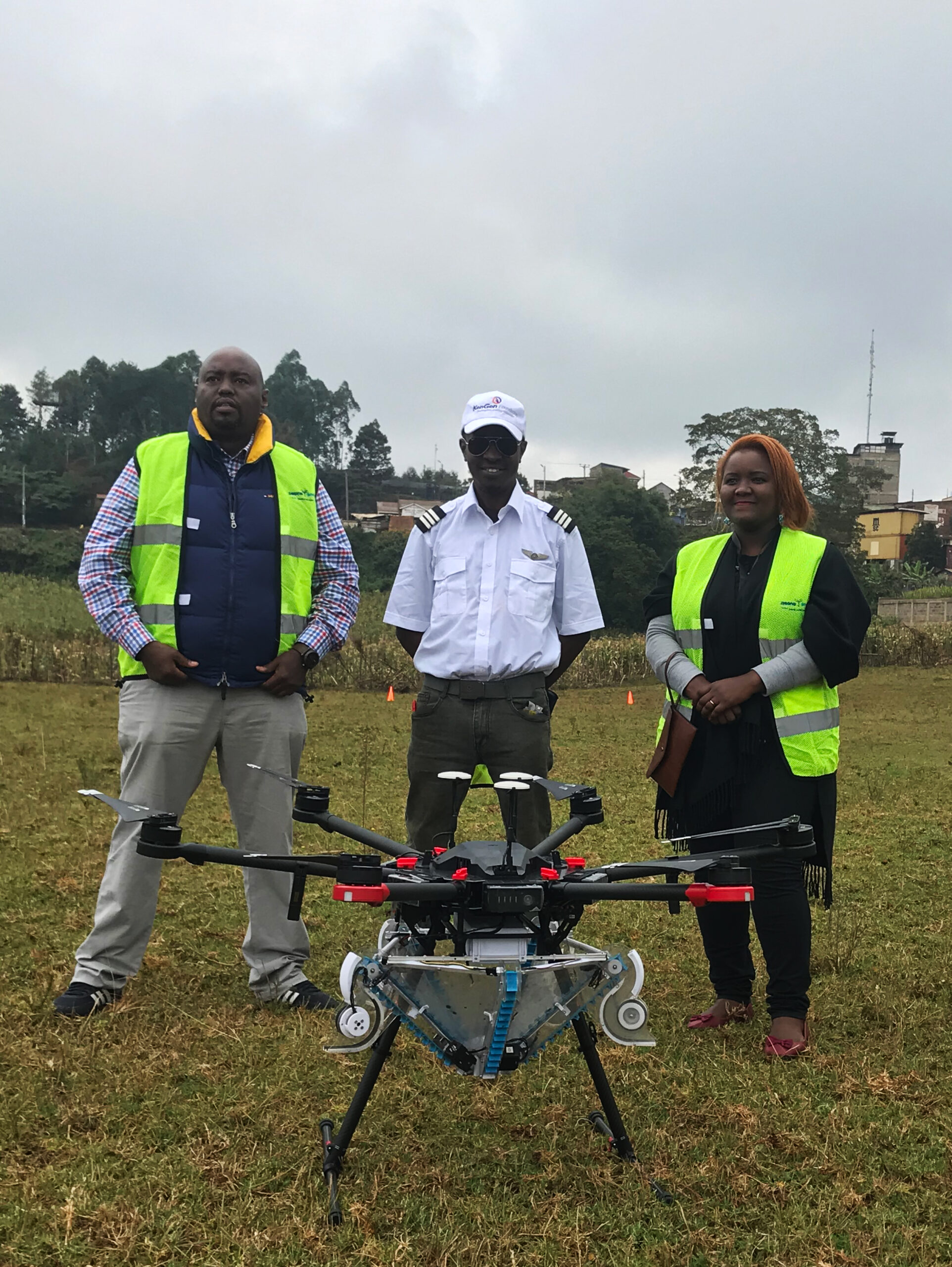One of the interventions outlined in Kenya’s Strategy for reaching 10 per cent forest cover is the use of technology in forest regeneration, protection and planting. As a result, drone technology is one of the possibilities being touted as potentially capable of reaching this goal.
According to Anthony Igecha, Managing Trustee of the KenGen Foundation, airborne seeding and drone technology are two methods for speeding the regeneration of millions of hectares of deforested and degraded forests and other ecosystems.
He was speaking in Nairobi during a demonstration on how drone technology can be used in tree planting by Drone Space Ltd. Accompanied by Senior Programmes Officer Eishibah Msengeti and the Foundation’s Communication Officer and Drone Pilot Ernest Nyamasyo.
Anthony said unlike planting trees manually, which is labour intensive, time consuming and limited in the amount of area that can be covered, drone technology can cover a bigger area in a shorter period.
Furthermore, he stated that due to the rugged terrain and surrounding foliage, certain forest landscapes are difficult to operate on and access. The drones on display are specialized models that are outfitted with seed dispensers and can carry up to 7kg of seeds. In one flight, which is about 15 minutes, the drone can cover 0.8 hectares and in an hour, it can seed 3.2 hectares of land, according to Tony Mwangi, a drone pilot instructor and CEO at Drone Space.
“We are testing this technology to have it as an alternative that can be used to reach places that are hard to reach because the drone is cheaper to operate than an aeroplane,” said Mr. Mwangi. He added that drones can fly lower without causing any risk because they are unmanned.
A drone drops millions of seed balls in this technique, also known as aerial reforestation. A seed ball is made of mud and natural nutrients and includes seeds from a certain tree species. When seeds fall to the ground, they immediately sprout when they come into touch with the correct quantity of moisture and develop into forests over time. This strategy is particularly ecological in that it allows scientists to determine which species naturally prefer to flourish in a certain location without the interference of humans.
In terms of efficacy, the most significant savings from aerial seeding utilizing drone technology come from not having to employ nurseries to grow seedlings, as well as not having to carry heavy pre-grown seedlings to potentially remote areas.
Despite Kenya’s global commitment to the Africa Forest Landscape Initiative (AFR100), 50 per cent reduction of greenhouse gases from the forest sector by 2030 as part of its Nationally Determined Contribution (NDC) to climate change, and to achieve land degradation neutrality by 2030 as a commitment to United Nations Convention to Combat Desertification (UNCCD), the forest cover remains low at about 7.2 per cent, as per recent estimates.
Drones are also a great tool for capturing aerial imagery with platform-mounted cameras and sensors. Images can range from simple visible-light photographs to multi-spectral imagery that can be used to assess different aspects of plant health, weeds, and assets. In the era of precision conservation, drones are acting as an essential technology that will take afforestation to a completely new level.
Follow us on Twitter through @KenGen_Foundatn and like our Facebook page for more updates.
–Ernest Nyamasyo, Communication Officer
@tweets
KenGen Foundation
4 weeks ago
Congratulations Dr. William Samoei Ruto, President-Elect, Republic of Kenya.
Read More
KenGen Foundation
1 month ago
RT @KenGenKenya: To ensure the trees grow, we monitor their success and growth. So far, KenGen has achieved over 70% success rate. #KenGenC…
Read More
KenGen Foundation
1 month ago
RT @EAPhilanthropy: Are you a # philanthropy organization committed to #ClimateAction? Here’s a resourceful tool to guide your steps as a…




